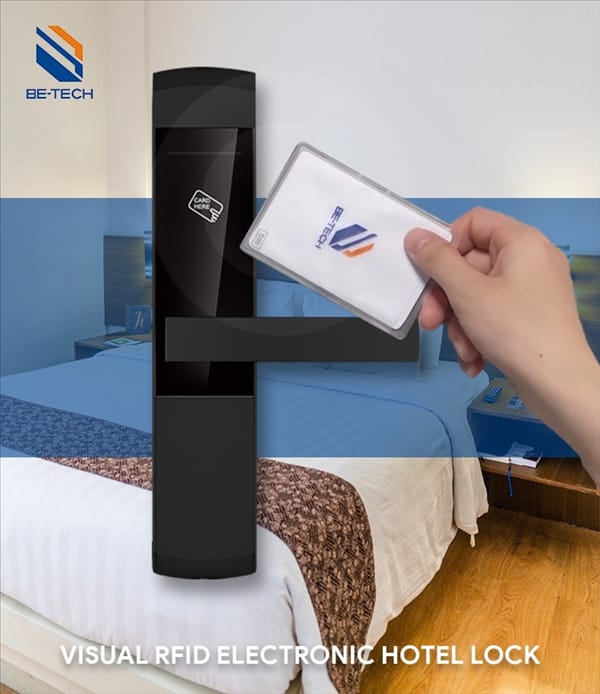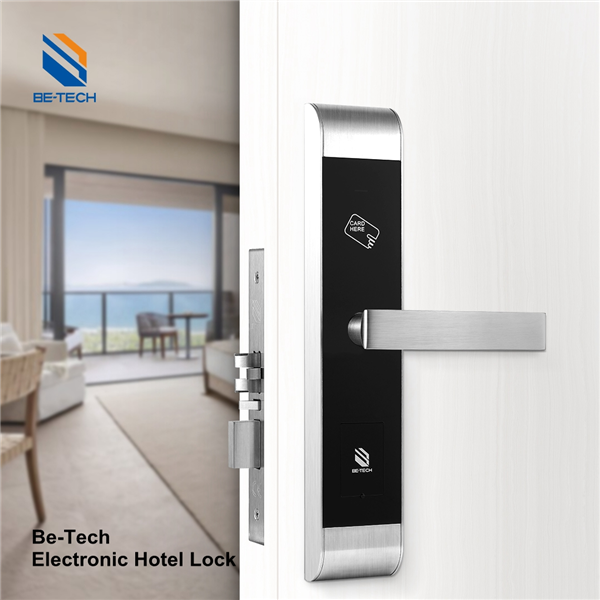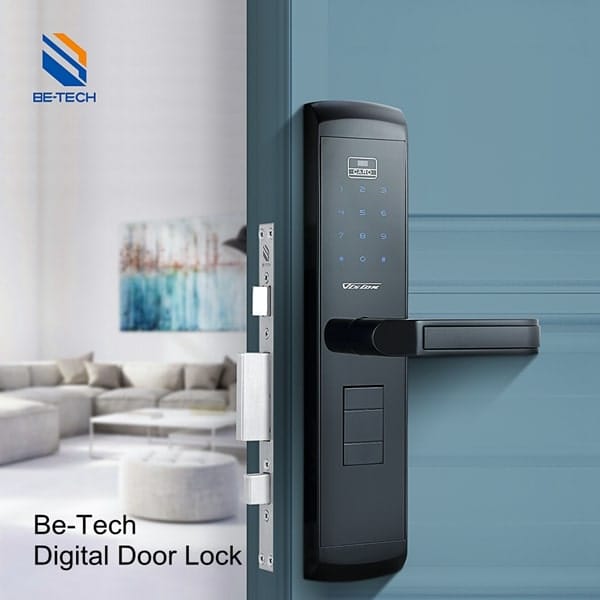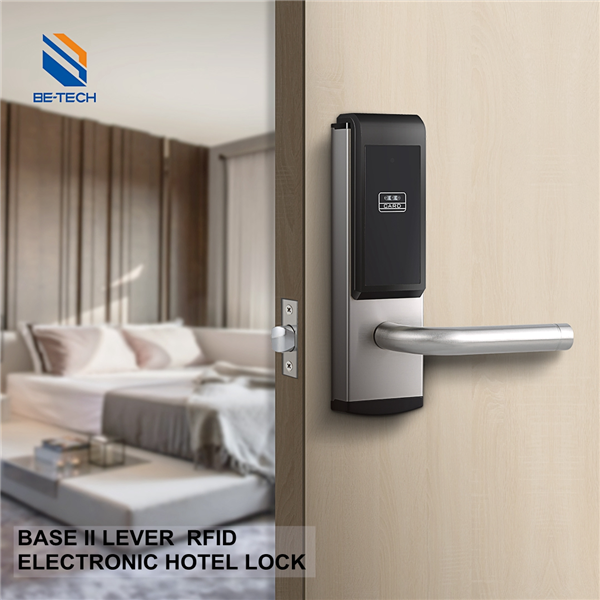In the hospitality industry, ensuring the safety and security of guests is paramount. One of the most critical aspects of this is the hotel locking system. As technology evolves, hoteliers face the decision of whether to retrofit existing locks or replace them entirely. This article provides a comprehensive analysis of both options, focusing on economic considerations, benefits, drawbacks, and emerging trends in 2024.
Understanding Your Lock System Options
When upgrading your hotel’s locking system, you essentially have two primary options: retrofitting your existing locks or full replacement. Each approach has its unique advantages and challenges.
Retrofitting Existing Locks
Retrofitting involves modifying your current lock system to integrate new technologies without completely replacing the existing hardware. This approach is increasingly popular due to its cost-effectiveness and minimal disruption to hotel operations.
Benefits of Retrofitting
Lower Upfront Costs: Retrofitting can be significantly cheaper than a full replacement, often costing 50% less.
Faster Implementation: The process of retrofitting is generally quicker, allowing hotels to upgrade their systems with minimal downtime.
Minimal Disruption: Since existing hardware is utilized, the impact on guests and hotel operations is reduced.
Preservation of Existing Infrastructure: Retrofitting allows hotels to maintain their current investments in hardware while enhancing functionality.
Sustainability Benefits: By reusing existing components, hotels can reduce waste and align with sustainability goals.
For instance, a mid-sized hotel chain recently retrofitted its outdated magnetic stripe locks with RFID technology. The decision was primarily driven by budget constraints and the desire to minimize operational disruptions across 500+ rooms. They discovered that the existing locks’ mechanical parts were still in excellent condition, allowing them to reduce waste and save money while enhancing security.
Potential Drawbacks of Retrofitting
Limitations on Advanced Features: Retrofitting may not allow for the integration of the latest technologies.
Maintenance Issues: Older hardware may require more frequent maintenance, leading to potential long-term costs.
Unexpected Challenges: During the retrofitting process, unforeseen issues may arise, leading to additional costs or delays.
Full Lock Replacement
Replacing your entire lock system offers a comprehensive upgrade but comes with higher costs and potential operational challenges. This option is ideal for hotels seeking a complete overhaul of their security system or those with severely outdated locks.
Benefits of Full Replacement
Access to Latest Security Features: Full replacement allows hotels to incorporate the most advanced technologies available.
Improved Reliability: New locks generally offer better long-term reliability and performance.
Modern Aesthetic: A complete replacement provides an opportunity to enhance the hotel’s appearance and brand image.
Enhanced Integration: New locks can be better integrated with hotel management systems and other technologies.
Potential Drawbacks of Full Replacement
Higher Initial Investment: The upfront costs for full replacement can be substantial, often ranging from $300 to $600 per door.
Extensive Installation Process: Replacing locks can take longer and may require more extensive labor.
Operational Disruptions: Guests may experience inconveniences during the installation process, which could affect their overall experience.
Factors to Consider When Deciding
When deciding between retrofitting and full replacement, several factors should be considered:
Current System Age and Condition: If your existing locks are over 10 years old or showing significant wear, replacement might be more cost-effective in the long run.
Budget Constraints: Evaluate your budget and determine which option aligns best with your financial capabilities.
Desired Features: Consider whether retrofitting can provide the necessary functionality, such as mobile key access or enhanced security protocols.
Impact on Guest Experience: Assess how each option will affect guests during implementation and daily use.
Long-Term Goals: Think about your property’s future plans and whether a retrofit or replacement aligns better with your vision.
Integration with Existing Systems: Evaluate how well each option can integrate with your current property management systems (PMS) and other hotel technologies.
Scalability: Consider whether the chosen solution can easily accommodate future expansions or upgrades.
Emerging Trends and Considerations for 2024
As we look ahead to 2024, several exciting trends are shaping the future of hotel lock technology:
Mobile Access: Keyless entry using smartphones is becoming standard, with many guests preferring the convenience of using their devices. The integration of mobile keys can significantly enhance the guest experience. For more insights, check out our article on Mobile Keys: The Seamless Future of Hotel Check-In.
Biometric Integration: High-end properties are exploring facial recognition and fingerprint access for enhanced security and personalization. For example, the Fingerprint and RFID Card and Touchpad Digital Door Lock (H3A5FMTL) offers multiple authentication methods, making it suitable for hotels aiming for high security. Learn more about this product here.
IoT Connectivity: Lock systems that integrate with other smart hotel features can enhance the overall guest experience and improve operational efficiency.
Cybersecurity Measures: Implementing robust protection for connected lock systems is crucial to safeguard guest data and maintain trust.
User Experience: Ensuring new technologies are intuitive and user-friendly for guests of all ages and tech-savviness levels is essential.
Sustainability: Energy-efficient locks and systems that reduce the need for physical key cards are gaining traction among environmentally conscious hotels.
Cloud-Based Management: Remote monitoring and management of lock systems are becoming increasingly important for multi-property operators.
Making the Right Choice for Your Hotel
To determine the best approach for your property, follow these steps:
Assess Current System Functionality: Evaluate the current state of your lock system and its security level.
Identify Must-Have Features: Determine the essential features you want in your upgraded system.
Calculate Total Costs: Compare the total costs of both retrofitting and replacement options, including installation and potential maintenance.
Consider Long-Term ROI: Analyze the long-term return on investment for each approach.
Consult with Reputable Lock System Providers: Seek personalized recommendations from trusted suppliers to ensure you make an informed decision.
Cost Comparison: Retrofit vs. Replace
While exact costs can vary depending on the size of your property and the specific systems chosen, here’s a general comparison to help guide your decision:
| Cost Type | Retrofitting | Full Replacement |
|---|---|---|
| Average cost per door | $150-$300 | $300-$600 |
| Installation time | 15-30 minutes per lock | 1-2 hours per lock |
| Disruption | Minimal | Potential disruptions |
It’s important to note that while retrofitting may have a lower upfront cost, full replacement could offer more long-term value through enhanced features and potentially lower maintenance costs over time.
Case Study: The Oceanview Resort’s Lock Upgrade Success
To illustrate the real-world application of these concepts, let’s examine the case of The Oceanview Resort, a 250-room property that recently underwent a lock system upgrade.
Challenge: The resort’s decade-old magnetic stripe locks were becoming unreliable and didn’t offer the modern features guests expected.
Solution: After careful consideration, the management decided on a hybrid approach:
- Retrofitted 200 standard rooms with RFID technology.
- Fully replaced locks in 50 premium suites with state-of-the-art biometric systems.
Results:
- 40% cost savings compared to full replacement across all rooms.
- Improved guest satisfaction scores by 15% within three months.
- Reduced key-related issues by 80%.
- Enhanced security with real-time monitoring and alerts.
This case study demonstrates how a thoughtful, tailored approach to lock upgrades can yield significant benefits while managing costs effectively.
Implementation Best Practices
Regardless of whether you choose to retrofit or replace your locks, following these best practices can ensure a smooth implementation:
Plan Carefully: Develop a detailed timeline and communicate clearly with staff and guests about the upgrade process.
Train Staff Thoroughly: Ensure all employees are well-versed in the new system’s operation and troubleshooting procedures.
Pilot Test: If possible, implement the new system in a small section of rooms first to identify and address any issues before full rollout.
Provide Guest Education: Create clear instructions and support channels for guests to easily adapt to the new lock system.
Monitor and Adjust: Regularly collect feedback from staff and guests to make necessary adjustments and improvements.
The Future of Hotel Lock Systems
As we look beyond 2024, the future of hotel lock systems is exciting and full of potential. Emerging technologies like blockchain for enhanced security, AI-powered predictive maintenance, and even more seamless integration with guest smartphones are on the horizon.
One particularly promising development is the concept of “smart rooms” where the lock system is just one part of a fully connected and personalized guest experience. Imagine a scenario where a guest’s preferences for lighting, temperature, and even minibar contents are automatically set upon unlocking their room door.
However, with these advancements come new challenges, particularly in the realm of data privacy and security. Hotels will need to stay vigilant and adaptable to ensure they’re providing cutting-edge convenience without compromising guest safety and trust.
Conclusion: Balancing Innovation and Practicality
In the end, the decision between retrofitting and replacing your hotel’s lock system in 2024 comes down to a careful balance of factors unique to your property. By thoroughly assessing your current situation, future goals, and budget constraints, you can make an informed choice that enhances security, improves guest experience, and provides a solid return on investment.
Remember, the goal is not just to keep up with the latest trends, but to implement solutions that genuinely add value to your hotel’s operations and guest satisfaction. Whether you opt for a cost-effective retrofit or a comprehensive replacement, the key is to choose a solution that aligns with your hotel’s brand, meets your guests’ expectations, and positions you for success in the ever-evolving hospitality landscape.
By staying informed about the latest developments in hotel lock technology and working with trusted partners like Be-Tech, you can ensure that your property remains secure, efficient, and appealing to guests for years to come.








